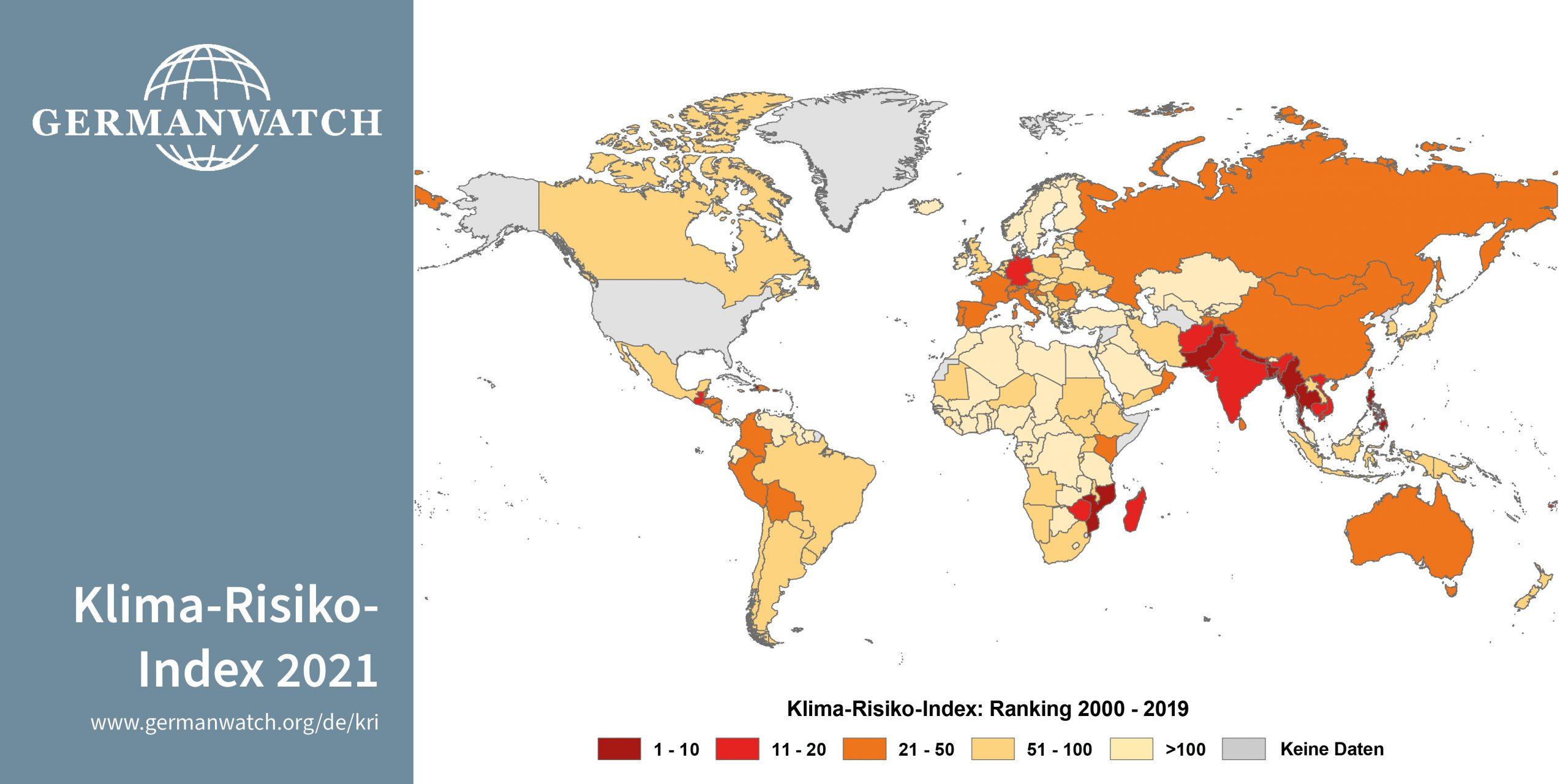The Global Climate Risk Index 2021
The Intergovernmental Panel on Climate Change (IPCC), under the aegis of the United Nations, defines climate risk as the likelihood of unfavourable impacts occurring as a result of severe climate events interacting with vulnerable environmental, social, economic, political or cultural conditions.
The Global Climate Risk Index 2021 analyses to what extent countries and regions have been affected by impacts of weather-related loss events (storms, floods, heat waves etc.). Human impacts (fatalities) and direct economic losses were analysed. The most recent data available — for 2019 and from 2000 to 2019 — were taken into account.
The Index was published on January 25, 2021.
The 2021 Index does not include data from United States of America.
The Index aims at contextualising ongoing climate policy debates, especially the International climate negotiations – looking at the near world impacts in 2019 and the past two decades.
For the period from 2000 to 2019 Puerto Rico, Myanmar and Haiti rank highest.
Mozambique, Zimbabwe as well as the Bahamas were the most affected countries in 2019.
As per the index, India has been ranked 7th Global Climate Risk Report Index 2021.
This year’s 16th edition* of the analysis reconfirms earlier results of the Climate Risk Index: Less developed countries are generally more affected than industrialised countries.
GLOBAL CLIMATE RISK INDEX 2021
India has improved its rankings from last year. It is ranked 7th in the 2021 Index as compared to 5th in 2020 Index.
The Indian monsoon lasted a month longer than usual in the year 2019, with surplus rains causing major hardship.The rain was 110% of normal, which is the most since 1994.
The floods caused by heavy rains were responsible for 1800 deaths and led to displacement of 1.8 million people.
Overall, 11.8 million people were affected by the intense monsoon season and the economic damage caused was estimated to be US$ 10 billion.
India was hit by a total of 8 tropical cyclones. Of which, Cyclone Fani (May, 2019) caused the maximum damage.
The Himalayan glaciers, the coastlines, and the deserts in India have been severely affected by global warming.
The Report also points to an increase in the number of heat waves, increased intensity and frequency of cyclones and an increased rate of melting of glaciers in India.
SOURCE= https://www.germanwatch.org/en/19777
DRISTIIAS












0 Comments